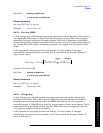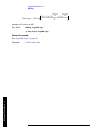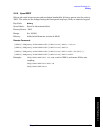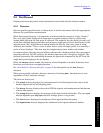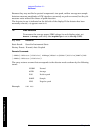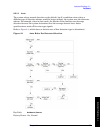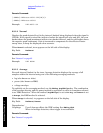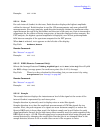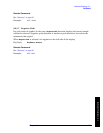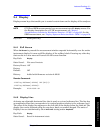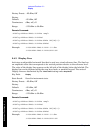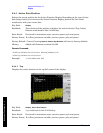
Chapter 2 99
Instrument Functions: A - L
Det/Demod
Instrument Functions: A - L
Example: DET AVER
2.3.1.4 Peak
For each interval (bucket) in the trace, Peak detection displays the highest amplitude
within the interval. Peak detection is used for CW measurements and some pulsed-RF
measurements. For swept analysis, peak detection basically obtains the maximum video
signal between the end of the last bucket and the start of the next one. Gain is increased to
compensate for the effects of faster sweep rates, to keep the displayed value accurate. For
FFT analysis, the highest spectral amplitude is displayed, even if that peak amplitude
falls between samples of the spectrum computed in the FFT process.
When
Peak is selected, Peak appears on the left side of the display.
Key Path:
Det/Demod, Detector
Remote Command:
See
“Detector” on page 95
Example: DET POS
2.3.1.5 RMS (Remote Command Only)
Selects the Average Detector. If
BW/Avg, Avg/VBW Type is set to Auto (or Pwr Avg) this will yield
the RMS voltage (average power) for each trace point. (See 3.4.1.3, Average)
Key Path: There is no key selection for this setting, but you can access it by using
Average Detector (see “Average” on page 98).
Remote Command:
See
“Detector” on page 95.
Example: DET RMS
2.3.1.6 Sample
The sample detector displays the instantaneous level of the signal at the center of the
interval (bucket) represented by each trace point.
Sample detection is primarily used to display noise or noise-like signals.
Sample detection is not best for amplitude measurements of CW-like signals for two
reasons. First, the peak response to a signal can occur between samples, so unless the
Span to RBW ratio is lower than usual, the highest sample can be well below the peak
signal amplitude. Second, for the high sweep rates normally used, the peak response of the
RBW filters is up to –0.5 dB. This sweeping error is compensated when using the peak and
normal detectors by changing the overall gain. But the gain is not changed when in the
sample detector, because to do so would cause errors in the response to noise.



